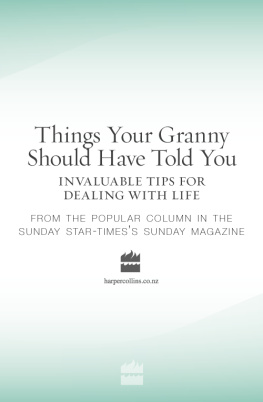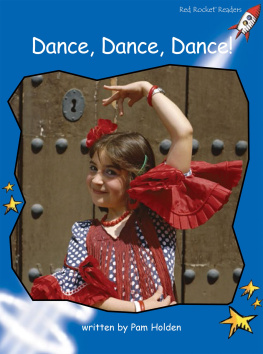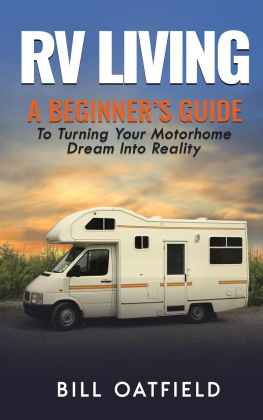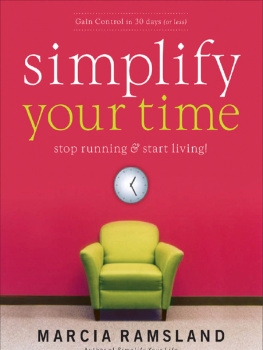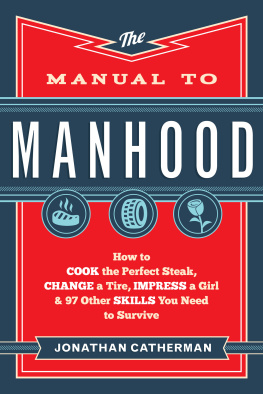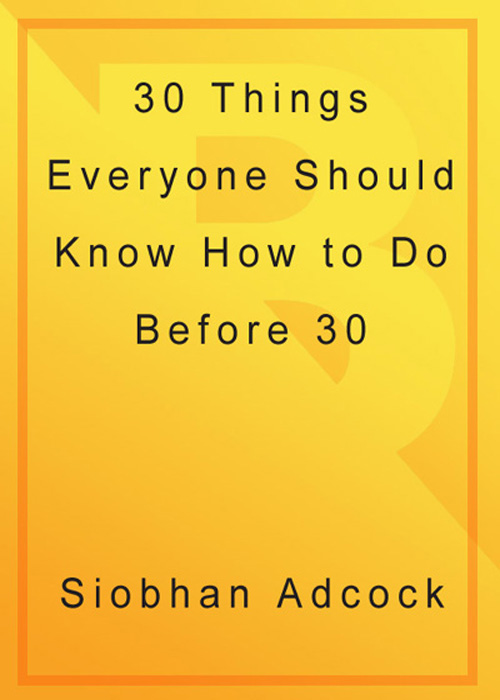
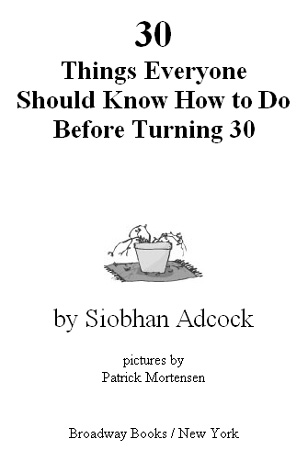
Acknowledgments
The smartest thing anybody can do is to surround herself with brilliant friends.
Thanks to:
Mom and Gilly, Andrew Roth, Andrew Corbin, Patrick the Invincible, Becky Cole, Jim Rutman, Gerry Howard, Megan Ptacek, Janelle Asplund, Melanie Lefkowitz, Tony Shortway, Jen Griffin, Tracy Tuenge, Jason Warner, Chip Harlan, James Caldwell, Andrew Barber, Sharlene Frank, Laura Garrity, Anasuya Sanyal, Anne Leonard, Amanda Touchton, Sarah Lefton, Jenn Chen, Gillian Robertson, Erika Faust, and Sheila OMalley. You all helped, whether you know it or not. Some of you may be annoyed to discover just how much.
Contents
Introduction
People like people who know how to do stuff. Its pretty simple. The secret to making friends and influencing people (and, by the way, to having a nice life) is knowing how to do stuff. This principle actually works on a scale. That is, knowing how to do one or two things really well makes you an interesting, capable person, but knowing how to do, oh, say, thirty things really well makes you, not to put too fine a point on it, kind of extraordinary. Acquiring the skills in this book will make you not just competent, but a guru in a world of mere go-to people, a master in an age of dilettantes. Your life will change. You will feel cooler. You will be cooler. Your friends will like you more. Your relatives will love you more. You will go to more parties and at them, you will meet and talk to better-looking people and they will like and respect you. Yes. You. If youre like me or my friends, you probably already know how to do at least a few of these things, but many more are still mysteries to you. The exact reason why you dont know this stuff isnt importanttheres no need to point fingers at our parents, teachers, or older siblings. Were just correcting for some gaps in our practical education.
Because on a practical, serious level, most of the skills this book has to teach are ones a well-rounded, fully formed person should have mastered by the time she or he is old enough to own property or have kidsand for many people nowadays, thats around the age of thirty. As you approach thirty, you expect to start feeling like a grown-up, or at least more like a grown-up than you did at twenty. The years leading up to your thirties require you to develop a whole new skill setyoure moving ahead in your career, your friends are getting married and having children, your parents and grandparents are getting older, your standard of living is changing. Suddenly you need to know how to spend discretionary income, how to keep house, how to be a good human being (and a good wedding guest), how to maintain a car and an apartment and a career and healthy relationships with your friends and family. All this is part of feeling like a grown-up, but why stop there? The life skills in this book will help you feel not just like a grown-up, but like a badass.
Thirty certainly shouldnt be considered a cutoff point for finding this book usefulits never too late to learn how to jump start a car. If youre forty-five and surrounded by dead plants and havent gotten a raise in ten years, theres still something here for you, my friend. This book isnt intended to serve as a long list of ways in which you are inadequate and ill-equipped to face the world. Unless you have really bossy friends (like myself) or know a particularly avuncular repairman, you couldnt possibly have picked up all of this stuff already. Youve been too busy dealing with your job and your 401(k) and your vitamin intake. So think of this book as a survival manual for the second most bafflingly ignorant period of your life, your twenties and early thirties (the most bafflingly ignorant period being, naturally, your teens). Read it and go forth with dignity, or at least without making any tremendously embarrassing or expensive mistakes. Unlike the skills and arts taught by so many other arch, glib, how-to books and guides, you dont have to buy into a lifestyle or an aesthetic to find this stuff useful. Theres no go-girling here, no snapping up, no pandering, no artificially enhanced behavioral code of ethics. These are just skills that improve you, and improve the world. Be gallant. Be gracious. Be smart. Be a hero. Be irresistible.
Be an insufferable know-it-all.
Skills That
Save Time or Money

How to Wrap a Present
Why You Should Learn This
A great present wrapped badly or not wrapped at all is a great present, yes. But the person who gets it is still going to think, somewhere deep inside, that despite your wonderful presentwhich took you months of searching, saving, and covert intelligence-gatheringyou didnt really care.
Why do human beings like getting and giving presents? On the receiving end, we like gifts because were acquisitive little monsters: We like beautiful things, and we especially like ripping beautiful things open. On the other hand, were also approbation-seeking little ferrets, and we like being responsible for the happiness of other ferrets, in part because that means the other ferrets have to be nice to us. The point is this: Gifts were invented to inspire as much pleasure as possible, on both sides of the transaction. If you skimp on the presentation, you deny the recipient some of the ineffable pleasure of receiving a gift, however much they may claim they dont care that the thing looks like someone juggled it. And in handing a rumpled treasure to someone and expecting them to make the best of it, you rob yourself of the pleasure to be found in doing something really wellwell enough to drop jaws, mist eyes, illuminate faces.
And even if you didnt care enough to get a decent present, it should still at least look good so the recipient has something nice to say about it. If youre going to give a gift at all, do it right.
How To
First, its time to set the record straight about some common present-wrapping methods that are in fact kind of lame:
Presents tucked into minishopping bags with tissue paper. Weve all done it, but lets admit the truth: Its just flat-out lazy. And even if nesting something in a wad of tissue and dropping it into a bag was the remotest bit difficult or thoughtful, the real crime is that theres no upside for the recipient at all: Theres no satisfying paper tearing involved (which is the reason why presents are wrapped to begin with), and whats the recipient supposed to do afterward with a goddamn minishopping bag?
In general, try to avoid giving a present in anything that cant be ripped open and immediately discardedlike paperor immediately reused, like a cool lunchbox or carrying case, a utile/nifty/nonseasonal storage container, or an attractive cloth bag (like a wine bottle satchel).
Never aggrandize a small present by putting it in a big box. It is the cruelest joke, as you well know if you have ever been six years old.
Bows and ribbons are only worth the effort if they actually look good. If youre going to put a bow or ribbon on, make sure it coordinates somehow with the paper, is tied nicely, and doesnt look flimsier or lower quality than the paper itself.
Classic Present-Wrapping Technique
Next page

